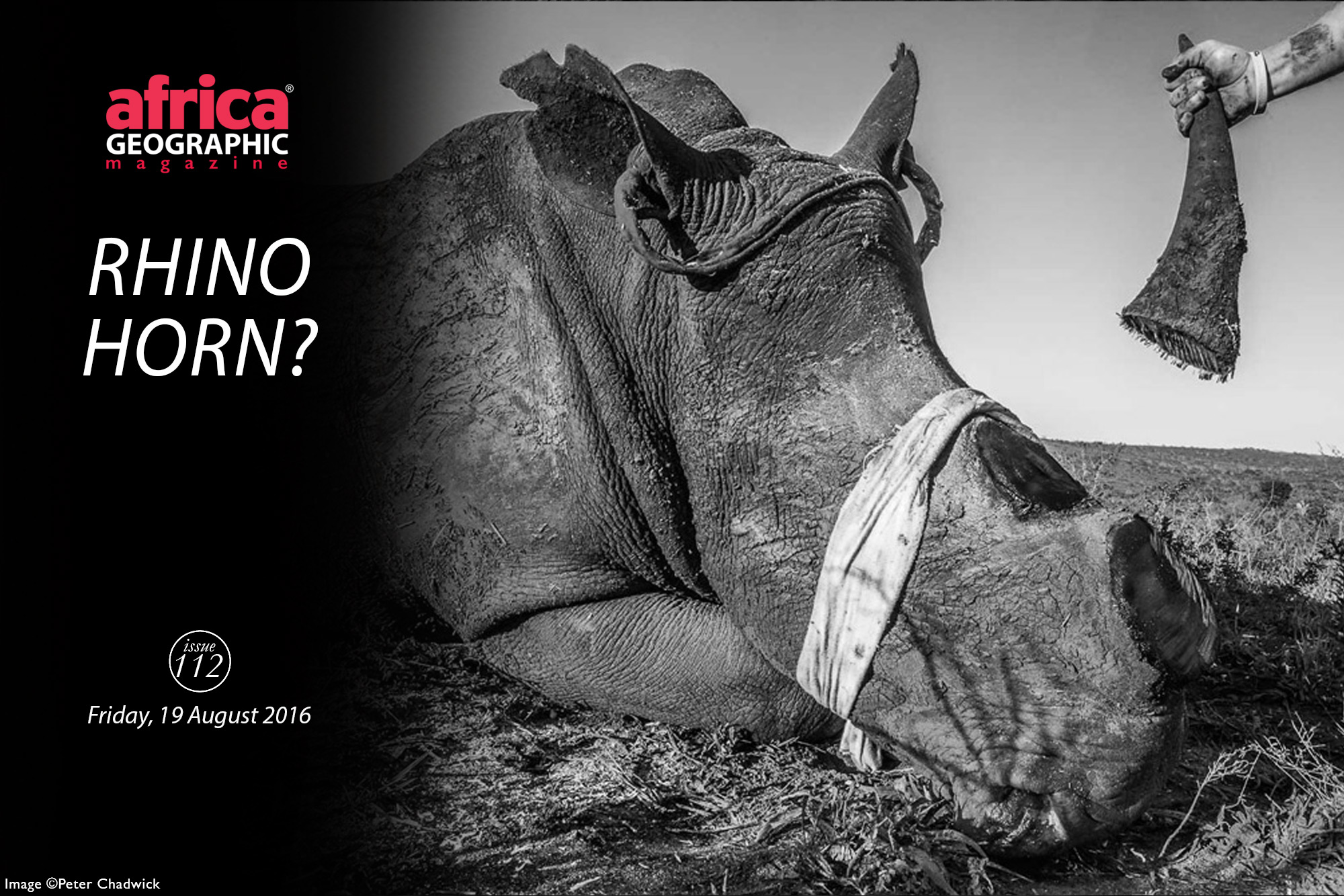
Making the difficult decision to dehorn rhinos in order to save them

A chainsaw sputters to life, and its loud hum fills the air. Two black rhinos – a mother and her calf – lie helplessly on the ground. They tremble a bit, though never move from where they have fallen. A helicopter takes off and buzzes above us before speeding away, its heavy blades chopping through the sky. The mother is an exemplary rhino; her primary horn is long and curved like a crescent moon, and her secondary horn is tall and straight, almost matching the first horn in length.
Today, both the mother and the calf will lose their horns because of rhino poaching. There are, however, two crucial factors that affect today’s outcome. The first is that the rhinos will walk away from this experience with their lives and the second is that the process is performed by a highly-skilled wildlife veterinarian and an accompanying team of conservation professionals – the very people who dedicate their careers and lives to protecting these animals. The Zululand Rhino Reserve (ZRR), located in northern KwaZulu-Natal, South Africa, is in the midst of the process of dehorning all of its rhinos. The reserve is not alone in this decision and rhinos all over the country are having their horns removed by the very humans who are trying to protect them.
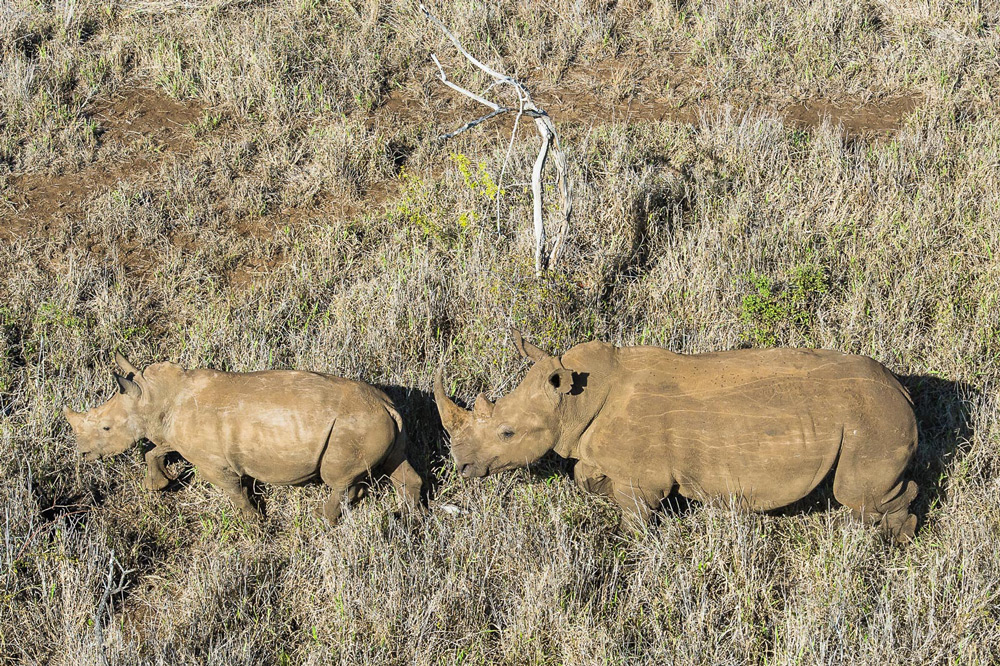
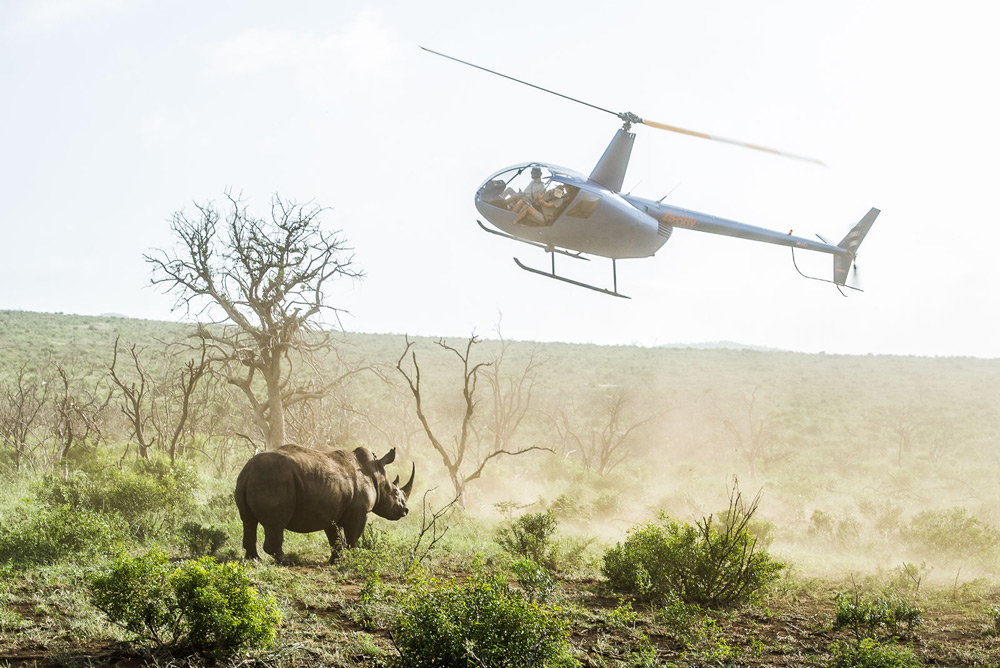

Where to start
The chainsaw’s blade starts to whir and plunges into the rhino’s horn. It cuts loudly and steadily through the thick horn, and suddenly, under the Zululand sun, it begins to rain rhino horn dust. A large tarpaulin is draped on the ground under the rhino’s head to catch all of the shavings, as even the smallest amount of horn holds value in the illegal rhino horn market. As the blade continues to carve its course through the horn, I flinch and look away, nervous that the cut is too deep. But it is not. The cut is perfectly executed and just nicks the growth plate. The wildlife veterinarian, Dr Mike Toft, is not new to this practice. To date, he has personally dehorned almost 200 rhinos in the greater Zululand area. Mike wields the chainsaw like a practised artisan and expertly cuts around the base of the horn towards the growth plate, which rises in the middle like a small mound.
After the cutting is finished, he uses an angle grinder, explicitly designed for keratin, to grind down as far as he can. Small drops of blood begin to form on the base of the horn. “That’s how you know you’ve gone far enough,” Mike assures us. Previous dehorning methods made only the initial cut, leaving a large chunk of horn mass sitting around the growth plate at the base of the rhino’s horn. Recently Mike cut an additional 2.1 kilogrammes of rhino horn off of a large white rhino after the first cut. With 2.1 kilogrammes of rhino horn translating to approximately US$275,000 on the black market, he is undoubtedly correct when he explains, “that’s why rhino dehorning was not considered successful in the past – there was still enough horn left to tempt poachers.”
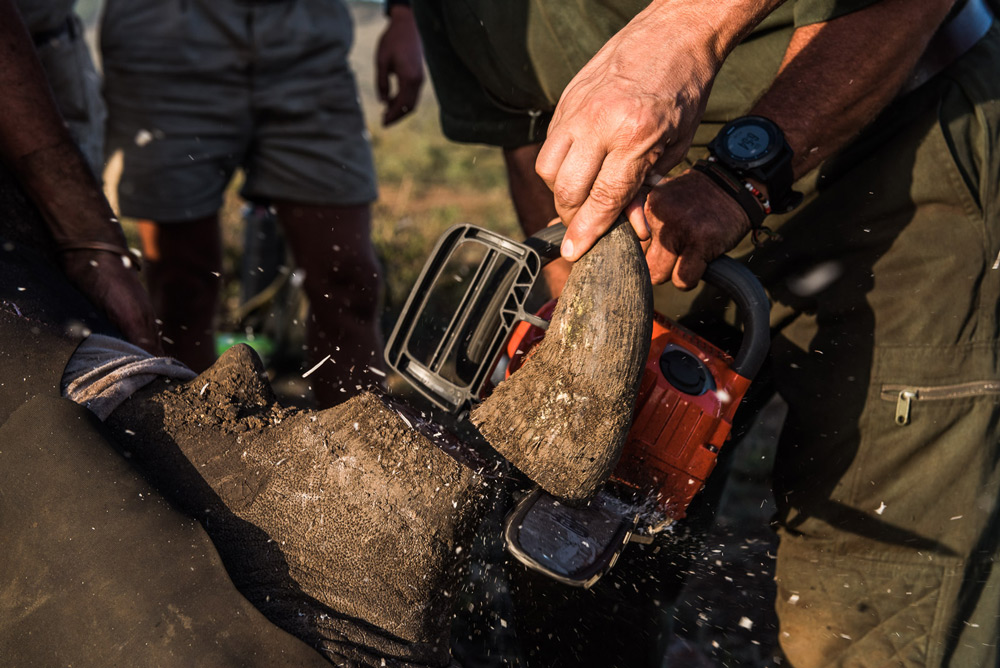
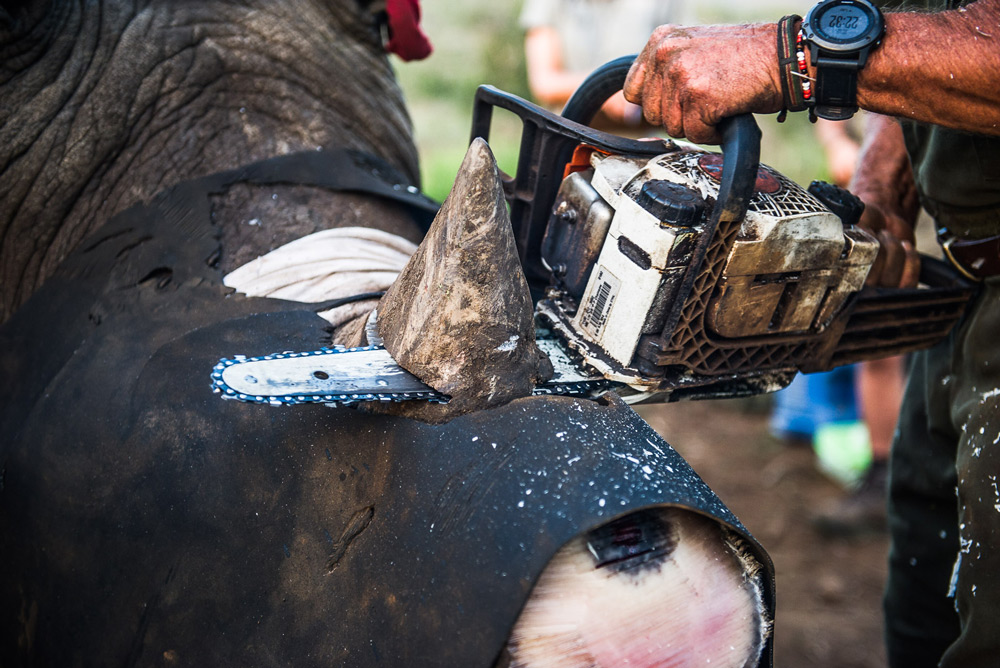
The secondary horn is cut just as close, and then the horns are removed from the calf. All the while the ground team works hard, taking blood, skin and hair samples for DNA, recording ear notches and identification numbers, and photographing the animals for records. Mike simultaneously monitors their condition while dehorning the rhinos. They have been darted from a helicopter with a cocktail drug containing an immobiliser, a tranquilliser and an enzyme to ensure rapid absorption. The immobilising drug causes a surge of adrenaline, which accounts for much of the trembling. The entire process is quick and professional.
“It’s not gentle, but it is effective,” according to Mike.
Although that is the case, many rhino lovers still find the process traumatic to watch. Rangers and onlookers choke back tears and soldier on with the task at hand. The dehorning of these two rhinos has been sponsored by a generous donor from the United States, who accompanies us today. Before the rhinos are woken up, he kneels and places his hand on the calf’s small body and takes a silent moment. There are so many things a person desires to communicate to a rhino in this circumstance: compassion, assurance, sorrow, frustration, solidarity. Instead, the team works quickly and calmly, accomplishing what they believe is necessary to protect their rhinos.

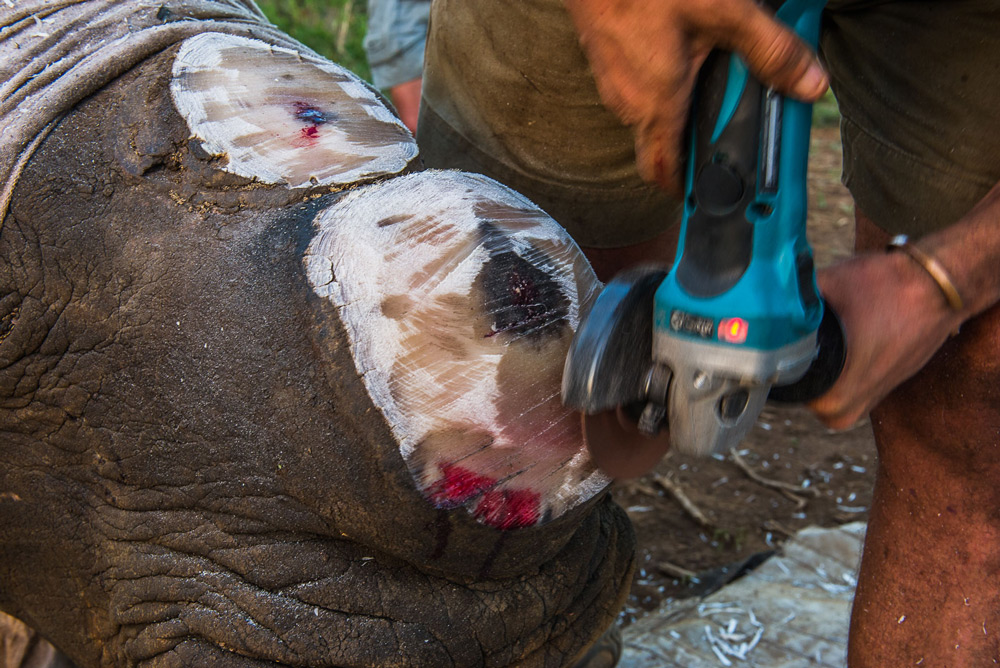
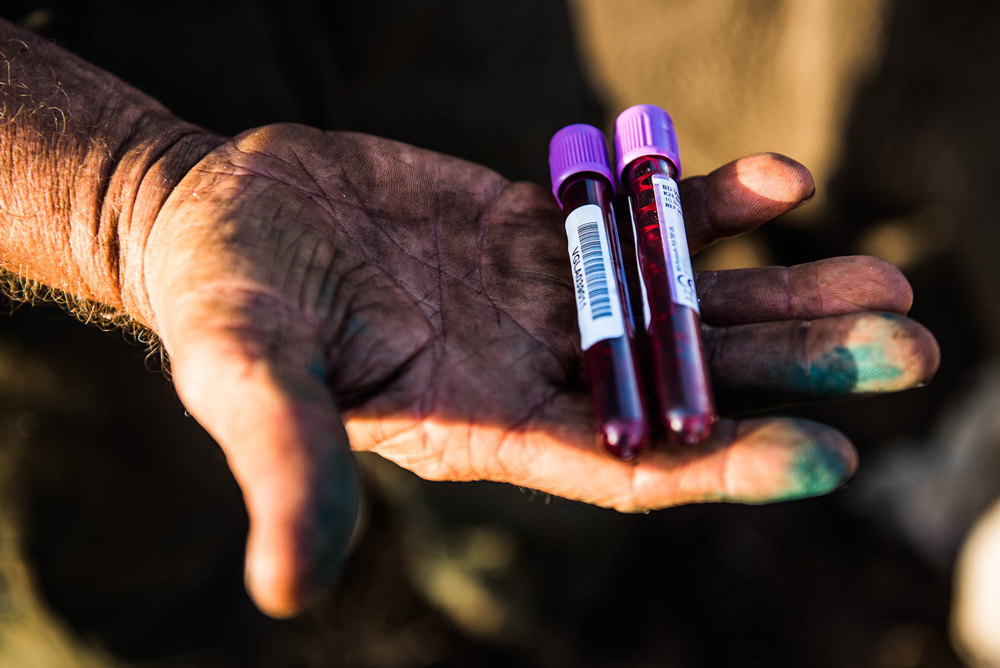
The veterinarian administers a reversal drug to the mother and calf. Within minutes they are both on their feet, huffing and puffing. They charge off into the bush seemingly unaffected albeit a few kilogrammes lighter. The quick return to normalcy is reassuring, and the team proceeds with a sense of accomplishment and purpose. Our next targets have been identified by rangers in the field, and the ground team’s vehicles rush off to meet the helicopter, which is quickly making its way to dart the identified rhinos. The second set of rhinos is another mother-calf pair, but this time of white rhinos. Again, the mother is remarkably beautiful – an older female with an impressively sizeable primary horn. With a horn of this size, it is only due to the hard work of the anti-poaching team in the ZRR that she is still alive. Removing it is demoralising. “It’s devastating to have to deface a rhino because of human greed,” notes Karen Holmes, the general manager of the ZRR.
A crossroads in conservation
We are at a critical moment in rhino conservation. While overall the population of both black and white rhinos in Africa is still growing, we are getting incrementally closer every year to that crucial tipping point where poaching pressure exceeds population growth. From there, it’s a slippery slope to extinction. Many subpopulations have reached that point already. In 2015 alone, over 1,300 rhinos were poached in Africa. Those on the frontlines protecting our rhinos are battle-weary, and the demand for rhino horn shows no sign of relenting. Rangers, managers and owners are desperate for help to stop the ongoing slaughter.
The solution that many are currently turning to is the removal of rhino horns. Dehorning has become commonplace mostly because it is working. Removing the horns is effective at decreasing the reward for poachers’ efforts. Alternative solutions, like poisoning of rhino horn, have proved ineffective, and anti-poaching activities alone are not enough.

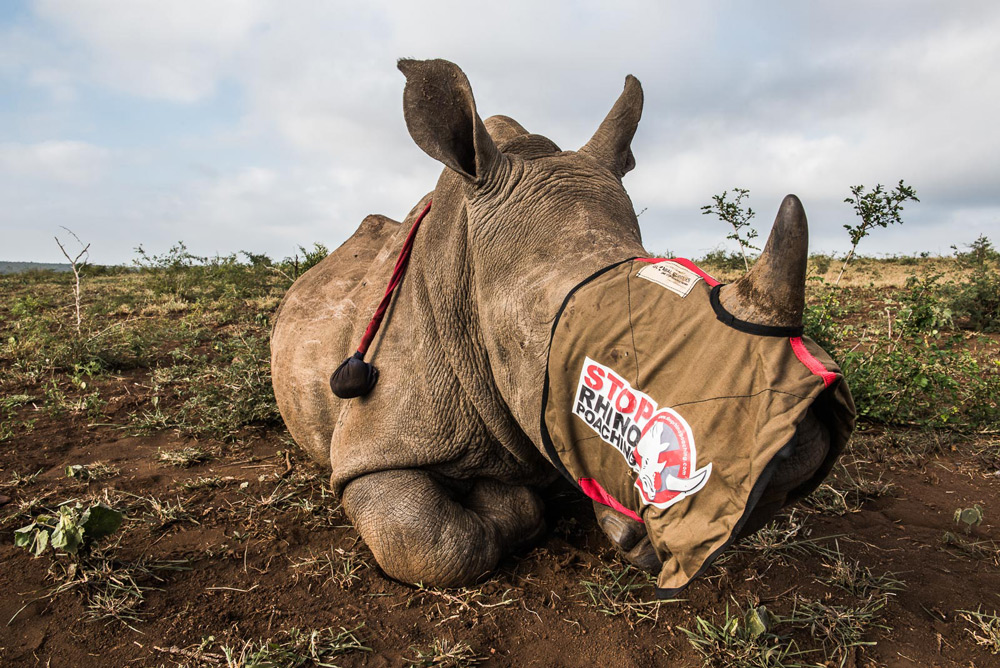
The issues to consider
It may seem an obvious solution, but from a reserve’s point of view, the decision is never easy. There are logistical, financial and ethical issues with which to grapple when considering rhino dehorning. Dehorning is not a cure-all solution. Rhino horn grows back rapidly and, within about a year and a half, the horn on a young rhino is usually big enough to tempt poachers again. The effectiveness of dehorning is, therefore, temporary and the process must be repeated to continue to be a deterrent. Each dehorning procedure is costly, especially with veterinarian and helicopter fees to factor in. Some reserves are simply too big to be able to dehorn all of their rhinos, and there are also concerns that removing horns will negatively impact tourism.
Yet even when logistics and finances are managed, the number one consideration for whether or not to dehorn rhinos is always the potential effect on the rhinos themselves. Removing the horn from a rhino feels like a gross violation of nature. Evolution favours exaggerated traits, like the rhino’s horn, if there is a strong selective pressure for it to do so. Rhinos use their horns for territorial defence and dominance struggles, to assist in foraging, to protect their young from predators, in courtship, and possibly in mate selection. The knock-on effects of dehorning rhinos could, therefore, slow species growth rate. At an evolutionary scale, it’s a heavy price to pay to protect a species.
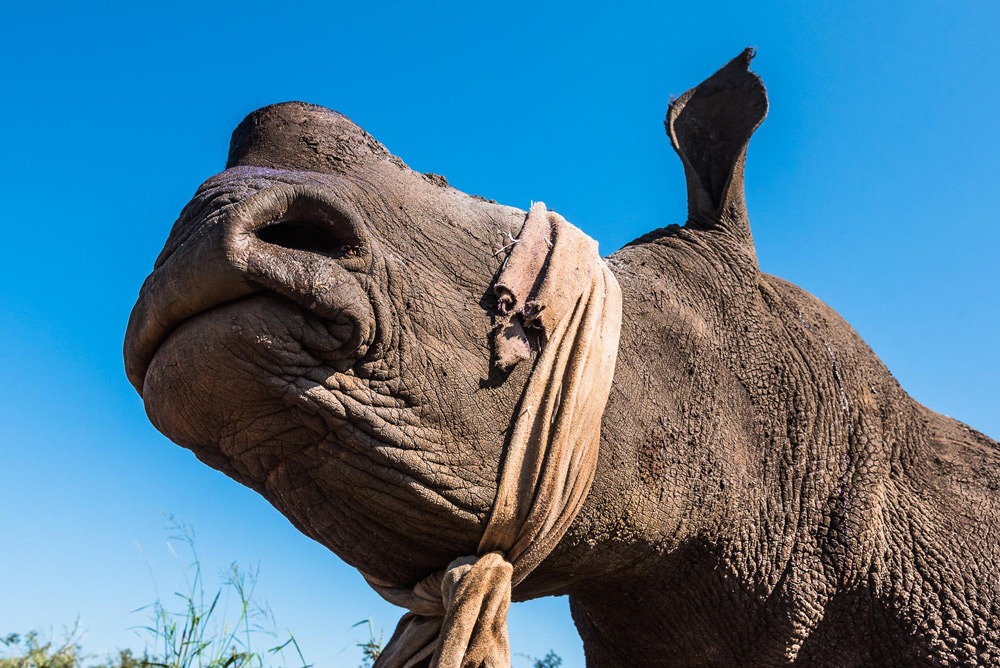
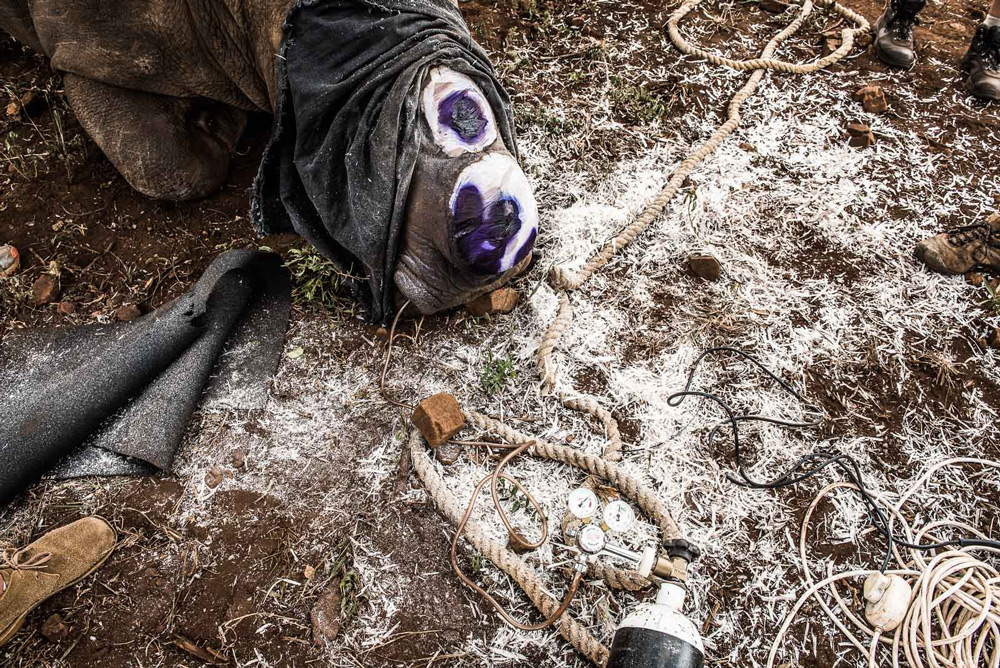

Zululand Rhino Reserve make their decision
The Zululand Rhino Reserve was formed in 2004 as part of the WWF Black Rhino Range Expansion Programme, comprised of a consortium of private landowners with varying interests, and decisions are made by a board of directors on Karen’s recommendations. When the ZRR’s board sat down to debate the choice of dehorning rhinos, many of the reserves around them had already instituted dehorning programmes. Like a horrible game of dominos, poaching pressure passes to the next population.
The vast majority of the reserve’s budget was already being spent on anti-poaching efforts to protect their rhinos. While these efforts had been mostly successful in the reserve, it continued to have poaching incursions regularly. Karen, having researched the pros and cons of dehorning, presented her recommendation to dehorn the ZRR’s rhinos with tears in her eyes, explaining how “it felt like we were admitting defeat.” The board’s vote was not unanimous, but the majority voted in favour of dehorning.

The legalisation of the trade in rhino horn
An unfortunate bedfellow to dehorning as a conservation strategy is the issue of legalisation of the trade in rhino horn, another hotly debated topic. When one of the ZRR’s neighbours went public with the announcement that they had instituted a dehorning programme, they were both praised and criticised. There were allegations that they had failed to protect their rhinos, hadn’t adequately considered alternatives, and worst of all, that the programme was a scam designed to harvest and bank rhino horn. These are stinging accusations for people who regularly risk their own lives in the line of duty and spend millions on protecting rhinos. While the company behind the reserve has publicly confirmed that they would be in favour of a legalised trade in rhino horn, this did not factor into their conservation manager’s analysis and recommendations for implementing a dehorning programme. His decision was made because they were doing everything they could on the ground but still struggling to keep rhinos alive.
Wildlands Conservation Trust, an NGO that runs community-owned Somkhanda Game Reserve (located a short distance north of the ZRR) is decidedly against the legalisation of the trade in rhino horn. They still decided to dehorn Somkhanda’s rhino population. As Kevin McCann, the Deputy Director of WCT succinctly puts it: “We decided we’d rather have rhino alive without horns than dead.”
Regardless of which side of the debate individuals or organisations fall on, the crux of the situation is that the international trade in rhino horn is currently illegal and that CITES is unlikely to legalise the trade. There’s no doubt that there are a few unscrupulous individuals who are dehorning rhinos and wagering on trade legalisation, but these are the minority. The vast majority implementing rhino dehorning programmes are doing so with the safety of the rhinos and the people protecting them in mind.

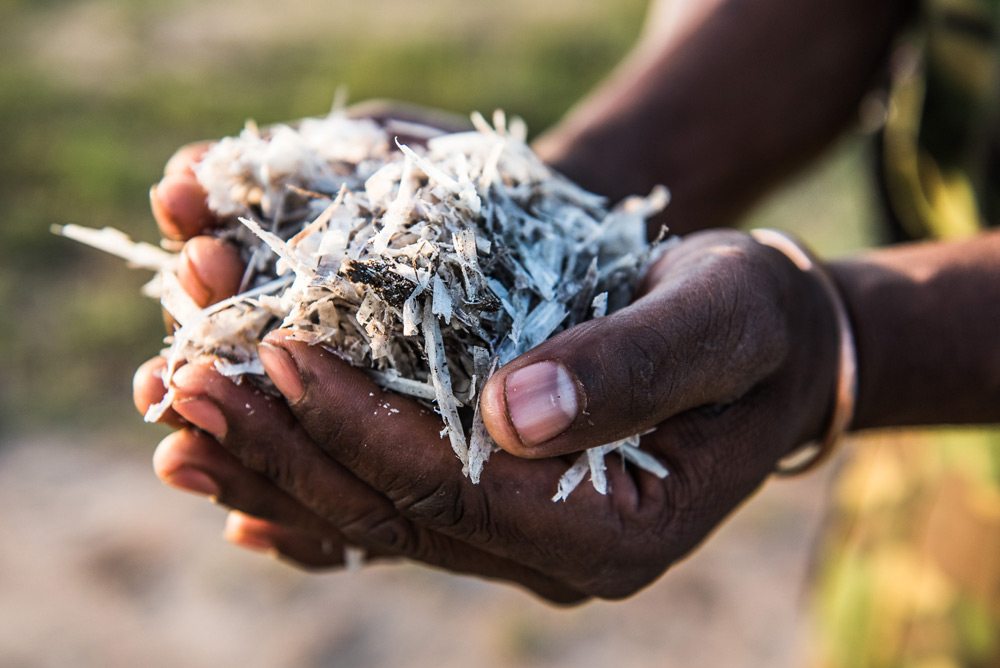
The future
On our sixth dehorning of the day, as the secondary horn is cut off a young male white rhino, it bounces towards me on the tarpaulin. I pick it up, and it fits perfectly into the palm of my hand. How absurd that this inert lump is worth more than its weight in gold on the black market. It is not a cure for anything. It is essentially the world’s most expensive placebo. This culturally-created placebo effect results in a substance with such astronomical worth that it is valued above the life of an animal, above human lives and above the obliteration of a species. I toss it back on the tarpaulin. In my eyes, it is worthless now that it has been removed from the rhino. The day wears on, and we dehorn nine rhinos in total. It is a full day’s work, and the physical and emotional exhaustion is evident on everyone’s faces.
The ZRR will continue with its dehorning programme and remove the horns from all the rhinos in the reserve. It is a colossal undertaking and a heavy responsibility to protect a population of rhinos. The relief, though temporary, must be tremendous. The next years will be critical in evaluating the success of dehorning programmes, as poaching and population growth rates are closely monitored.
Due to the security risk, any horns that are removed during dehorning programmes are immediately taken off the property and moved to a secure undisclosed location and stored in accordance with South African law.
On our drive back to camp we pass a dehorned female rhino grazing. She does not have a horn, but she is still a rhino and, most importantly, she is still alive.
Perhaps in the future, there will be a time when a rhino’s horn does not dictate its likelihood to live or die, but not today. Today there are nine fewer rhinos that will die at a poacher’s hands.
Related reading: Rhino horn trade = extinction in the wild (opinion post)
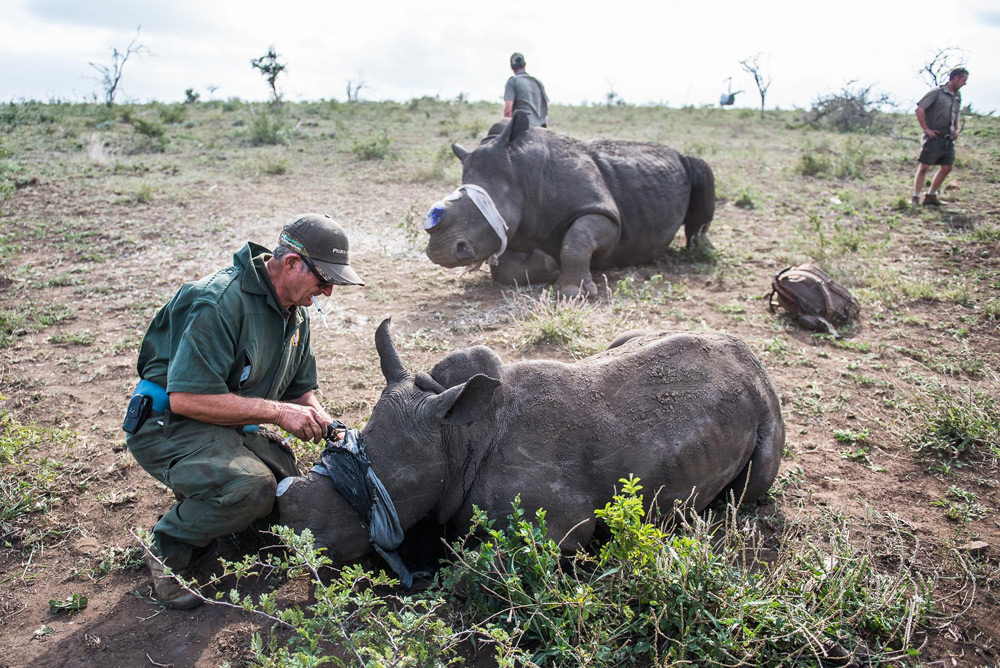
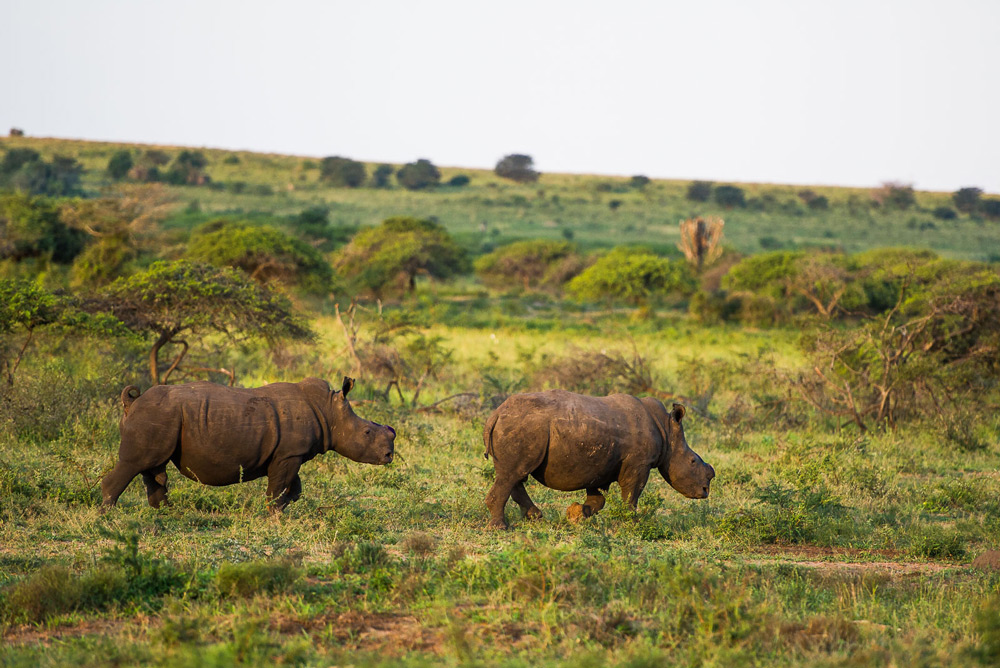

About the photographer
 All images ©Peter Chadwick. Peter Chadwick is an internationally recognised award-winning photographer.
All images ©Peter Chadwick. Peter Chadwick is an internationally recognised award-winning photographer.
He specialises in photographing and writing about conservation and environmental issues on the African continent. Peter is a Fellow of the International League of Conservation Photographers.
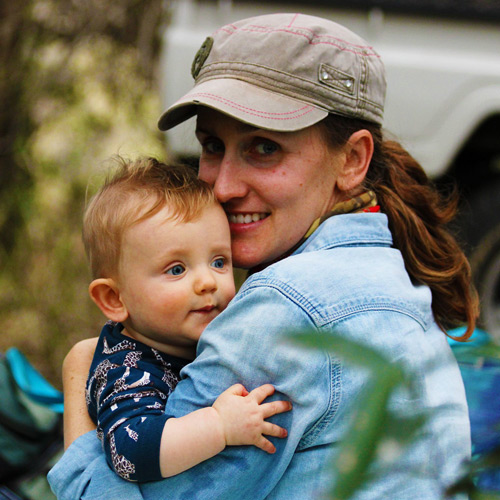 Shannon Airton is an American expat living in South Africa. She has a Bachelor’s degree in Ecology, Behaviour and Evolution and a Master’s degree in Biological Anthropology. A conservation biologist by training, she has worked in Zululand researching rhinos, wild dogs and leopards for the last 14 years.
Shannon Airton is an American expat living in South Africa. She has a Bachelor’s degree in Ecology, Behaviour and Evolution and a Master’s degree in Biological Anthropology. A conservation biologist by training, she has worked in Zululand researching rhinos, wild dogs and leopards for the last 14 years.
She has recently made the decision to give up the rather rough and nomadic life of a researcher to raise her two-year-old son and help run the family business, Rhino River Lodge, in the Zululand Rhino Reserve. Following her passion for conservation biology, her writing focuses on bringing important conservation issues to a public audience.
To comment on this story: Login (or sign up) to our app here - it's a troll-free safe place 🙂.![]()




